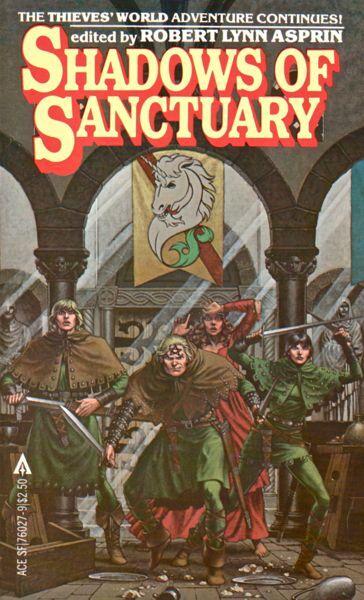(1) PRESCIENT PANDEMIC PROSE PRAISED. [Item by Olav Rokne.] In a thoughtful and in-depth piece about plague-related fiction, Joelle Renstrom (@couldthishappen) of Slate Magazine explores how Connie Willis’ 1992 Hugo Winner Doomsday Book seems particularly relevant in 2020. “Doomsday Book, the 1992 time-travel novel that sheds light on today’s pandemic”.
Doomsday Book—whose name is a nod to the Domesday Book, a 1086 survey commissioned by William the Conqueror—features two protagonists who try to stop the spread of deadly contagions 700 years apart. In the 2054 timeline of Doomsday Book, there are no cellphones, but thanks to a complex machine called the “net,” time travel exists. The net prevents time travelers from altering history, so its main use is for historians conducting research. In Oxford, England, history professor Dunworthy sends an undergraduate researcher back in time to what he thinks is 1320. Afterward, the time travel device technician who helped send the student back in time falls seriously ill with an unknown virus. The very night he is hospitalized, public health workers begin tracking down his primary and secondary contacts and researchers begin sequencing the virus. In this future, there are governmental and scientific systems in place to respond rapidly to a new contagion. Indeed, that’s the easier part. Willis underscores a poignant truth, particularly for contemporary readers: A pandemic’s true toll is determined not by doctors and politicians, but by everyone else.
(2) IMAGINING LIFE ON OTHER WORLDS. Alien Worlds Season 1 is streaming on Netflix.
Applying the laws of life on Earth to the rest of the galaxy, this series blends science fact and fiction to imagine alien life on other planets.
(3) VOTER FAVORITE. Congratulations to Mikki Kendall whose Hood Feminism placed second in the Best Nonfiction category of the 2020 Goodreads Choice Awards.
(4) FANS SKEPTICAL ABOUT FUNDRAISING FOR TOLKIEN HOUSE. The UK’s Tolkien Society says they don’t support the Project Northmoor charity which is raising money to buy J.R.R. Tolkien’s Oxford house. The Society’s “Statement on Project Northmoor” lists concerns —
…As a leading Tolkien organisation, the Trustees considered whether Project Northmoor would help achieve the Society’s objective to educate the public in, and promote research into, the life and works of J.R.R. Tolkien. The Trustees unanimously concluded that it did not.
The Trustees’ specific concerns include that:
- Project Northmoor’s two-page plan lacked sufficient detail;
- No prominent members of the Tolkien community – be they writers, academics, artists etc – are directors of the company, or are named as running the project;
- This would not be a museum and would not be open to the public;
- Project Northmoor’s primary intention appears to be to run creative workshops, rather than educational programmes about Tolkien;
- Project Northmoor’s plan includes spiritual retreats, which falls outside the scope of the Society’s objective;
- Their business model includes running a bed and breakfast, with a full-time resident warden;
- The property itself is a listed building in a conservation area – with a blue plaque proudly showing its connection to Tolkien – meaning the property is well protected under the law and not in need of rescue;
- The relationship between the US and UK organisations appeared unclear; and
- As a new organisation – Project Northmoor having only existed for a month – it is difficult to assess their ability, capability, and capacity to deliver the project successfully.
The Trustees wanted to provide this transparency of their conversation for the benefit of the Tolkien community. The Trustees – as is their legal duty under the law in England and Wales – were considering the best interests of the charity and whether it achieved the charity’s objective. For the above reasons they felt it did not.
(5) 55 YEARS AGO THIS WEEK. Mx. Kris Vyas-Myall helps Galactic Journey readers navigate the New Wave: [DECEMBER 4, 1965] A SIGN OF THE TIMES (MICHAEL MOORCOCK’S BOOKS OF 1965).
Across Britain, there has been a recent explosion of road signage. These are designed to establish safer traffic rules and to give people direction on how to use the area who would otherwise be unfamiliar. The one flaw with this is most people are confused as to what they mean….
Pedestrians do not fare much better. Only a small fraction knew that a white bar on a red circle means no entry, with many believing it meant something different, such as a pedestrian crossing.
This responses to the signage is similar to the relationship between science fiction readers and the new wave. For some they are stories full of meaningless symbols that go nowhere, for others it is an essential step in moving science fiction forward. And right at the centre of the new wave is Michael Moorcock.
In spite of being only 25 years old, Moorcock is one of the core figures in British science fiction. He previously edited both Tarzan Adventures and The Sexton Blake Library before taking over New Worlds magazine last year. For the last 5 years he has been a regular contributor to Carnell’s trio of magazines and has published books before such as The Stealer of Souls.
(6) ESSENCE OF WONDER. “For the Love of litRPG” is the theme of this week’s Essence of Wonder With Gadi Evron. Scheduled for Saturday, December 12 at 3 p.m. Eastern. Register at the link.
For an episode celebrating litRPG, a hugely successful genre ruled by indie authors, joining Gadi and Karen will be Shemer Kuznits, Avi Freedman, John Dodd, Avril Sabine, and Storm Petersen.
From what makes litRPG tick and our favorite authors, to the weird tropes hidden within, we fully intend to geek out.
(7) #DISNEYMUSTPAY. YouTuber Daniel Greene interviewed Alan Dean Foster and Mary Robinette Kowal about the #DisneyMustPay issue. Some interesting updates, including SFWA President Kowal confirming that Alan Dean Foster is not the only author affected.
(8) YEAGER OBIT. Aviator Chuck Yeager (1923-2020) died December 7. The LA Times profiled the first man to break the sound barrier.

After test pilot Chuck Yeager became the first man to break the sound barrier, he confessed to the highly un-Yeager-like emotion of fear.
“I was scared,” he wrote in a memoir, “knowing that many of my colleagues thought I was doomed to be blasted to pieces by an invisible brick wall in the sky. But I noticed that the faster I got, the smoother the ride. Suddenly, the Mach needle began to fluctuate, then tipped right off the scale.”
For 18 seconds on Oct. 14, 1947, Yeager was supersonic — a feeling he later likened to “a poke through Jell-O.” The achievement made Yeager an aeronautic legend — “the foremost in the Olympus,” according to author Tom Wolfe, “the most righteous of all the possessors of the right stuff.”…

NASA Administrator Jim Bridenstine issued a statement that concludes: “His path blazed a trail for anyone who wanted to push the limits of human potential, and his achievements will guide us for generations to come.”
(9) WALTER HOOPER OBIT. Walter Hooper (1931-2020). a literary advisor of the estate of C.S. Lewis, died December 7 of COVID-19. He served briefly in 1963 as C.S. Lewis’s private secretary prior to Lewis’s death, and became a custodian of Lewis papers and editor of his works. Joseph Loconte profiled him for National Review: “Remembering Walter Hooper: C.S. Lewis Expert Brought Author’s Work to World”.
…Hooper never tired of drawing attention to Lewis’s talent for making Christian thought persuasive to the layman. In his encyclopedic book C.S. Lewis: Companion and Guide, Hooper relates how Lewis gained national attention for his BBC broadcasts defending Christianity during World War II, receiving many speaking invitations. He engaged with fellow dons, members of the Royal Air Force, factory workers, and university students. “It was partly due to this varied experience,” Hooper writes, “that he came to see why the professional theologians could not make Christianity understandable to most people.” In the Protestant tradition to which he belonged (the Anglican Church), Lewis combined reason and imagination to translate the gospel into terms everyone could grasp.
“At times it embarrassed me, when Lewis was talking about God, that I hardly believed in the same way that he did,” Hooper told me. In this case, admiration generated a lifelong calling: What Christopher Tolkien achieved in excavating the work of his famous father, Walter Hooper accomplished for C.S. Lewis. At a recent conference in Slovakia, Hooper was asked to explain why he invested so much of his life quietly serving someone else’s legacy. He did not hesitate in answering: “I said, ‘It’s been wonderful. I wish to God I could do it all again.’”
(10) MEDIA ANNIVERSARY.
- In 1982, Shadows of Sanctuary, the third Thieves’ World as edited by Robert Lynn Asprin, and published by Ace Books, wins the Balrog Award. It was not the first nominated as both Thieves’ World, the first anthology, and Tales from the Vulgar Unicorn, the second anthology, were also nominated. The Balrogs which were given out from 1979 to 1985 were created by editor Jonathan Bacon in Issue #15 of Fantasy Crossroads and first presented at the Fool-Con II convention on April Fool’s Day, 1979.

(11) TODAY’S BIRTHDAYS.
[Compiled by Cat Eldridge and John Hertz.]
- Born December 8, 1861 — Georges Méliès. Best known as a film director for A Trip to the Moon (Le Voyage dans la Lune) which he said was influenced by sources including Verne’s From the Earth to the Moon and Around the Moon. (Died 1938.) (CE)
- Born December 8, 1894 – James Thurber. The 13 Clocks, The Wonderful O, The White Deer are fantasy, supposedly but not necessarily for children. The Last Flower seems to be science fiction. What are we to make of his seventy-five “Fables for Our Time” – are they fantasy? “The Rabbits Who Caused All the Trouble”? “The Owl Who Was God”? In “The Unicorn in the Garden” there really is a unicorn but denying it is wiser. “If Grant Had Been Drinking at Appomattox” is a spoof of alternative history. What of his cartoons? In any event, his particular subtle, almost sour humor excels. (Died 1961) [JH]
- Born December 8, 1894 — E. C Segar. Best known as the creator of Popeye who first appeared in 1929 in Segar’s comic strip Thimble Theatre. Popeye’s first line in the strip, upon being asked if he was a sailor, was “Ja think I’m a cowboy?” J. Wellington Wimpy was another character in this strip that I’m fond of. (Died 1938.) (CE)
- Born December 8, 1917 – James Taurasi. A founder of fandom. Attended the 1938 Philadelphia Conference. One of the “triumvirate” (with Moskowitz and Sykora) who produced Nycon I the first Worldcon. Ran “Fandom’s Corner” in Super Science Stories. His Fantasy Times, later Science Fiction Times, won the 1955 & 1957 Best-Fanzine Hugo. Big Heart (our highest service award). (Died 1991) [JH]
- Born December 8, 1930 – John Morressy. A score of novels, eighty shorter stories, some dark, some light-hearted. In fantasy, Kedrigern is a reluctant wizard first shown as an adult, then prequels of his youth. In science fiction, Nail Down the Stars and two more paint the same interstellar intrigue from three viewpoints while none sees the whole. Professor of English at Franklin Pierce College. (Died 2006) [JH]
- Born December 8, 1939 — Jennie Linden, 81. She’s here for being Barbara in Dr. Who and the Daleks, the 1965 non-canon film. Her next genre forays were both horror comedies, she was in A Severed Head as Georgie Hands, and she’d later be in Vampira as Angela. She’d show up in Sherlock Holmes and The Saint as well. (CE)
- Born December 8, 1950 — Rick Baker, 70. Baker won the Academy Award for Best Makeup a record seven times from a record eleven nominations, beginning when he won the first award given for An American Werewolf in London. So what else is he known for? Oh, I’m not listing everything but his first was The Thing with Two Heads and I’ll single out The Exorcist, Star Wars, The Howling which I quite love, Starman for the Starman transformation, Beast design on the Beauty and the Beast series and the first Hellboy film version. (CE)
- Born December 8, 1951 — Brian Attebery, 69. If I was putting together a library of reference works right now, Attebery would be high on the list of authors at the center of my shopping list. I think The Fantasy Tradition in American Literature: From Irving to Le Guin is still essential reading and Parabolas of Science Fiction with Veronica Hollinger is very close to a Grand Unification Theory of the Genre. (CE)
- Born December 8, 1954 — Rebecca Neason. She wrote a Next Generation novel, Guises of The Mind, plus several Highlander novels, and two fantasy novels; her widower says one novel went unpublished. She was a regular panelist at conventions in the Pacific Northwest. Jim Fiscus has a remembrance here. (Died 2010.) (CE)
- Born December 8, 1964 – Genevieve Graham, age 56. First studied to be an oboe player; began writing after age 40. Now devoted to Canadian historical fiction. Two novels for us, four others. Has read Charlotte’s Web, Huckleberry Finn, Nineteen Eighty-Four. [JH]
- Born December 8, 1966 – Anthony Lewis, age 54. Illustrator. Three hundred children’s books; also advertising, design & editorial. Here are the cover and two interiors for The Owl Tree. Here are the cover and two interiors for Why Do Stars Come Out at Night? Here is an interior for Why I Can’t See the Wind. Here is his image for Follow the Reader posters, bags, bookmarks. [JH]
- Born December 8, 1982 – Elizabeth Miles, age 38. Three novels, six covers. Here is one, Moon Window. [JH]
(12) COMICS SECTION.
- Good grief! This nutcracker is not sweet! The Argyle Sweater.
(13) MONOLITHS PROLIFERATING. Birds do it. Bees do it. Even men with stainless steel do it: “California Men Declare Themselves Makers of Pine Mountain Monolith” says the New York Times. And there are two other new ones.
For the first time, someone has taken credit for erecting one of the monoliths that have popped up in the last few weeks, riveting the world.
A group of four artists and fabricators unveiled themselves on Saturday as the creators of the stainless-steel curiosity that was placed atop Pine Mountain in Atascadero, Calif., on Tuesday — and shared a YouTube video of a newly made replacement going up after some young men unceremoniously toppled the original and put a cross in its spot, livestreaming themselves in the process.
“We intended for it to be a piece of guerrilla art. But when it was taken down in such a malicious manner, we decided we needed to replace it,” Wade McKenzie, one of the California monolith’s creators, said in an interview Sunday evening.
The news of the origins of the monolith was first reported by the website YourTango.
McKenzie said he built the three-sided steel structure with the help of his friend Travis Kenney, Kenney’s father, Randall, and Jared Riddle, a cousin of Travis Kenney.
Early Friday morning, another shiny steel tower was discovered in downtown Las Vegas under the Fremont Street Experience, a five-block entertainment district in the city’s casino corridor.
And yet another was found Saturday morning in Los Padres National Forest by campers at a site about 100 miles southeast of the one in Atascadero, The San Luis Obispo Tribune reported. According to the Tribune, the Los Padres monolith has “Caution” written in red letters at the top and features an image of a U.F.O. The creators of the Atascadero monolith told the news outlet on Sunday that they had not placed the monolith there.
(14) THE ROCKETS OF ‘65. In Episode 42 of the Two Chairs Talking podcast, Perry Middlemiss and David Grigg discuss the fine art of tsundoku and then fire up the Hugo Time Machine yet again to return to the year of 1965, when Fritz Leiber’s “The Wanderer” won Best Novel Hugo. “Life, the Universe, and Everything”.
(15) FROM THE ARCHIVES. See a unique 1997 television production of Rodgers & Hammerstein’s Cinderella on YouTube.
Cinderella (Brandy) chafes under the cruelty of her wicked stepmother (Bernadette Peters) and her evil stepsisters, Calliope (Veanne Cox) and Minerva (Natalie Desselle), until her Fairy Godmother (Whitney Houston) steps in to change her life for one unforgettable night. At the ball, she falls for handsome Prince Christopher (Paolo Montalban), whose parents, King Maximillian (Victor Garber) and Queen Constantina (Whoopi Goldberg), are anxious for him to find a suitable paramour.
(16) WRITING WITH AI. “What’s it like to write a book with an A.I.?” at Slate is an interview with K Allado McDowell.
What is it like to write with GPT-3, the latest language model neural network artificial intelligence system created by Open AI? Clarke Center Assistant Director Patrick Coleman interviewed K Allado McDowell, writer, researcher, and co-author of Pharmako-AI, the first book co-written with GPT-3, for Slate’s Future Tense series. For anyone interested in the nature of artificial intelligence as a model for human intelligence (and imagination) or the use of AI to create art and provoke new lines of thinking, Allado-McDowell’s provocative insights point to new approaches.
(17) SPEAKING OF ROBOTS. Calling Ursula K. Le Guin!
(18) VIDEO OF THE DAY. Epic Rap Battles of History has updated. This time, it’s “Harry Potter vs Luke Skywalker”, done entirely in Lego.
[Thanks to John Hertz, Olav Rokne, Cora Buhlert, Mike Kennedy, John King Tarpinian, JJ, Martin Morse Wooster, Michael Toman, Cat Eldridge, and Andrew Porter for some of these stories. Title credit goes to File 770 contributing editor of the day Anna Nimmhaus.]


